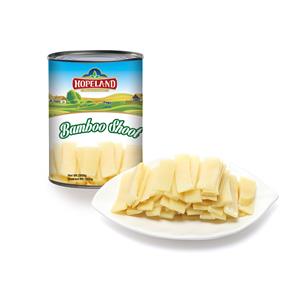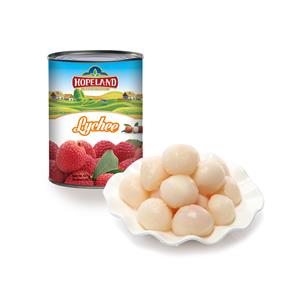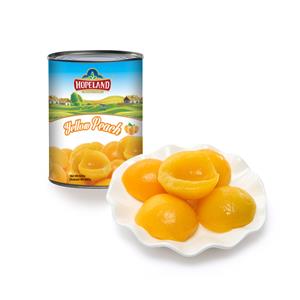Tomato Ketchup: History, Craft, and the Global Flavor That Defines Modern Cuisine
Few condiments have achieved the global recognition and cultural presence of tomato ketchup. Whether it is drizzled over French fries, squeezed onto a burger, stirred into marinades, or used as a secret ingredient in home cooking, ketchup has become a universal language of flavor. Its bright red color, sweet-tangy balance, and approachable character make it indispensable in households, restaurant kitchens, and food manufacturing lines around the world.
But ketchup’s journey—from ancient fermented fish sauces to the tomato-rich condiment we know today—is as fascinating as its diverse uses. This article explores the origin, evolution, production process, ingredients, quality standards, culinary applications, nutritional profile, and future trends of tomato ketchup, revealing why it remains one of the most beloved sauces of the modern era.
1. The Surprising Origins of Ketchup
Contrary to popular belief, ketchup did not begin with tomatoes—or even in the Western world.
1.1 From Southeast Asia to the West: The Birth of “Kecap”
The word ketchup is believed to come from the Hokkien term “kê-tsiap”, referring to a fermented fish sauce widely used in Southern China centuries ago. It was savory, salty, and deeply umami—nothing like the sweet red condiment we enjoy today.
Sailors and traders encountered kê-tsiap in coastal ports and brought the concept back to Europe. But lacking key Asian ingredients at home, European cooks began creating their own variations using mushrooms, anchovies, walnuts, oysters, or berries.
1.2 Tomato Takes Over
Tomatoes were not incorporated into ketchup until the late 1700s in the United States. As tomatoes grew in popularity and culinary acceptance, cooks discovered that tomato pulp provided a perfect body, natural sweetness, and acidity for a stable, flavorful sauce.
By the mid-19th century, tomato ketchup was mass-produced and bottled.
The most influential milestone came in the early 1900s, when producers standardized recipes, reduced artificial preservatives, and established ketchup as a safe, shelf-stable condiment.

2. What Makes Tomato Ketchup, Ketchup?
At its core, tomato ketchup is a harmonious blend of tomatoes, sugar, vinegar, salt, and spices. But the magic lies in the fine balance between sweetness and acidity, smooth texture, and recognizable aroma.
2.1 Essential Ingredients
Tomato Concentrate / Tomato Paste
The foundation of the sauce. High-quality ketchup uses ripe, firm, flavorful tomatoes processed into a thick paste that intensifies color and taste.
Sugar or Sweeteners
Provide sweetness to balance acidity. Some modern versions use cane sugar, beet sugar, or reduced-sugar alternatives.
Vinegar
Creates the signature tang, acts as a natural preservative, and stabilizes the sauce.
Salt
Enhances flavor, preserves freshness, and rounds out the palate.
Spices & Seasonings
Common spices include onion powder, garlic powder, cloves, cinnamon, celery seed, pepper, and allspice. Each brand uses its own blend, contributing to the uniqueness of its ketchup.
Water
Adjusts consistency and ensures smoothness.
2.2 Optional Additions
Natural flavors
Starches or thickeners
Fruit concentrates for complexity
Reduced-sodium or low-sugar formulas for health-conscious markets
The combination results in a sauce that is thick, glossy, and vibrant red, with a smooth pourability that consumers intuitively recognize.
3. How Tomato Ketchup Is Made: From Farm to Bottle
The ketchup production process is a well-refined combination of food science, industrial engineering, and culinary precision.
3.1 Harvesting and Sorting Tomatoes
Ketchup manufacturers typically use processing tomatoes, which are:
Thicker
Richer in color
Less watery
than fresh-eating varieties.
Tomatoes are harvested at peak ripeness and transported quickly to processing facilities.
Once delivered, they undergo:
Washing
Sorting
Inspection for defects
3.2 Making the Tomato Paste
Tomatoes are:
Crushed
Heated
Passed through sieves to remove seeds and skins
The result: a smooth tomato puree, concentrated further through evaporation to create tomato paste with a rich red hue.
3.3 Mixing and Cooking
In large steam-jacketed kettles, tomato paste is blended with:
Vinegar
Sugar
Salt
Spices and natural flavors
Heat helps the flavors meld, reduces water content, and ensures a smooth, uniform texture.
3.4 Homogenization
This mechanical process ensures:
Even particle size
Perfect smoothness
Stable viscosity
This is one reason why ketchup holds its shape when squeezed onto a plate.
3.5 Pasteurization and Bottling
The final mixture is heated to eliminate harmful microbes, ensuring long shelf life.
Ketchup is then filled—while still hot—into:
Glass bottles
Plastic squeeze bottles
Sachets for restaurants and airlines
Bulk containers for industrial buyers
Caps are sealed, labels applied, and products are tested for quality before shipping.
4. Quality Standards and Global Regulations
Because ketchup is consumed worldwide, it adheres to strict food safety and ingredient standards.
4.1 United States
The U.S. Food and Drug Administration (FDA) specifies:
Minimum tomato solids
Limits on additives
Clear labeling requirements
The term “ketchup” or “catsup” must match these standards.
4.2 European Union
The EU requires:
A minimum percentage of tomato dry matter
Stricter rules on sweeteners and preservatives
Accurate allergen labeling
4.3 Asia-Pacific Markets
Countries such as China, Singapore, Malaysia, and the Philippines have local standards that often mirror Codex Alimentarius guidelines.
4.4 Global Buyer Expectations
Across regions, buyers typically look for:
Strong color stability
High viscosity
Distinct tomato aroma
Consistent sweetness and tang
Clean-label formulations (increasingly popular)
5. Why Tomato Ketchup Tastes So Good: The Science of Flavor
Ketchup’s undeniable popularity comes from a unique flavor profile that hits multiple sensory zones at once.
5.1 Sweet, Sour, Salty, Umami—A Perfect Balance
Ketchup contains:
Sweetness (sugar)
Acidity (vinegar)
Saltiness (salt)
Umami (natural tomato glutamates)
Aroma from spices
This combination creates a multi-layered flavor that appeals universally.
5.2 The Color Psychology
Humans associate red with ripeness, sweetness, energy, and appetite.
Bright red ketchup visually stimulates hunger and pairs well with golden-brown foods like fries or grilled meats.
5.3 Texture Matters
The ideal ketchup texture is:
Thick
Smooth
Slightly clingy
This helps it coat food evenly without running.
6. Culinary Uses: More Than a Dipping Sauce
Tomato ketchup is incredibly versatile—far beyond burgers and fries.
6.1 Everyday Table Use
Most common pairings include:
French fries
Chicken nuggets
Hot dogs
Eggs
Grilled meats
Fried snacks
6.2 Ingredient in Cooking
Ketchup is often used as a base for:
Barbecue sauces
Glazes
Marinades
Stir-fries
Sweet-and-sour dishes
Fried rice and noodles in Southeast Asia
In many home kitchens, ketchup is the secret ingredient that brings balance to a dish.
6.3 In Global Cuisine
United States: Essential for burgers, meatloaf glaze, cocktail sauces
UK: Pairs with chips, sausage rolls, and shepherd’s pie
Philippines: Used in spaghetti and banana ketchup blends
China: Integral for sweet-and-sour pork
India: Added to chili chicken and street-side sandwiches
Middle East: Used in shawarma, grilled chicken, and pilaf
Its universality reflects its flavor adaptability.
7. Nutritional Profile and Health Considerations
7.1 Nutrients
A typical tablespoon of ketchup contains:
Calories: 15–20
Carbohydrates: mainly from sugars
Vitamins: small amounts of Vitamin A and Vitamin
Lycopene: an antioxidant linked to heart health, found abundantly in tomatoes
7.2 The Sugar Question
Traditional ketchup contains sugar to balance acidity.
Health-focused consumers may choose:
Reduced-sugar ketchup
No added sugar versions
Ketchup sweetened with stevia or other alternatives
7.3 Sodium
Regular ketchup includes salt for both flavor and preservation, but low-sodium options are now widely available.
7.4 Clean Label Trends
Modern consumers often prefer:
No artificial colors
No artificial preservatives
Non-GMO ingredients
Organic tomatoes
Producers respond by reformulating recipes toward healthier, more transparent ingredient lists.
8. The Global Market for Tomato Ketchup
Tomato ketchup is one of the highest-selling condiments worldwide.
8.1 Retail Market
Supermarkets offer:
Classic ketchup
Organic varieties
Spicy ketchup
Kids’ versions
Premium artisanal ketchup
8.2 Foodservice Sector
Restaurants, cafes, hotels, and fast-food chains buy:
Large bottles
Dispensers
Bulk pouches
Individual sachets
8.3 Industrial Buyers
Factories use ketchup in:
Ready meals
Sauces
Seasonings
Snack coatings
Meat marinades
8.4 Leading Producing Countries
Major global suppliers include:
China
United States
Italy
Turkey
Spain
9. Innovation and Future Trends in Tomato Ketchup
Ketchup continues to evolve with consumer preferences.
9.1 Health-Oriented Reformulations
Trending categories include:
No added sugar
Low-sodium
Organic
Tomato ketchup with superfoods
Fermented ketchup
9.2 New Flavor Directions
Manufacturers now experiment with:
Spicy chili ketchup
Smoked ketchup
Curry ketchup
Mango or pineapple ketchup
Black garlic ketchup
9.3 Sustainable Packaging
Eco-friendly options are rising:
Recyclable plastic
Paper-based condiment bars
Lightweight pouches
Refill packs
9.4 AI and Automation in Manufacturing
Modern factories use:
AI-driven quality monitoring
Automated mixing kettles
Precise viscosity control technology
to guarantee consistent batches.
Conclusion: Why Tomato Ketchup Will Always Be a Global Favorite
Tomato ketchup is more than a condiment—it is a cultural icon and a comfort food companion. From its surprising origins in ancient Asian sauces to its modern place on dining tables across continents, ketchup has become woven into the fabric of everyday eating. Its universal appeal comes from a simple but powerful combination of sweetness, acidity, ripe tomato flavor, and memorable aroma.
As trends move toward healthier eating, sustainability, and culinary innovation, ketchup continues to reinvent itself while preserving its familiar charm. Whether you enjoy it squeezed onto fries, stirred into a marinade, or used creatively in home cooking, tomato ketchup will remain a timeless, beloved flavor in global cuisine.




